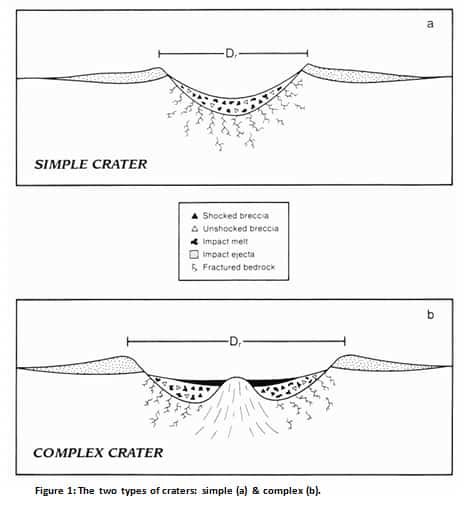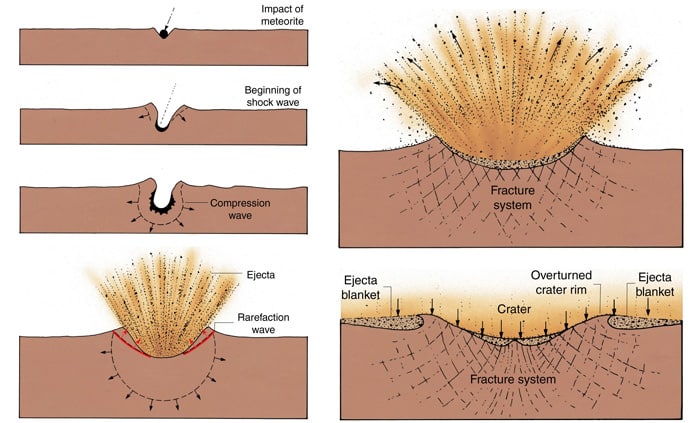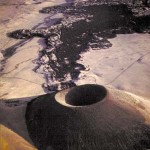Two Types of Impact Craters
Impact craters can be categorized in one of two ways: simple or complex.
A simple crater has a smooth bowl shape small with a small depth to diameter ratio. This ratio is typically 1:6 which means that if the crater is 1 m deep, it is 6 m wide.
A complex crater has a greater depth to diameter ratio, typically around 1:15. This means that if the crater is 1 m deep, it is 15 m wide. The second major difference is that uplift is formed in the center of the crater when the earth rebounds from impact.

Formation of Impact Craters
Impact craters are the bowl-shaped depressions that remain after a meteor or other object strikes the Earth, another planet, or a moon. Only about 150 Earth impact craters exist, mainly due to the fact that the dense atmosphere burns up most meteoroids before they reach the surface. It is also believed that the geological activity of the Earth erases or covers up many of the older craters. The Chicxulub crater in the Yucatan Peninsula is a massive impact crater hidden by water. It is believed to have been created by the impact of a huge meteorite at the end of the Cretaceous period (K-T boundary). Many scientists believe that the impact of this meteorite led to the extinction of the dinosaurs.
The impact craters peppering most surfaces of the terrestrial bodies in our solar system can be divided into two distinct classes: Simple craters and Complex craters. Simple craters possess the form that most people associate with the word “crater”; a circular “bowl” shape with an uplifted rim. Complex craters, on the other hand, display structures such as central peaks, or an inner “peaked” ring, terraced rim walls, and outer concentric faulted zones. Despite the fact that both classes of crater display significant physical differences, the final morphology of both is now believed to be the result of the collapse of a bowl-shaped “transient crater”, which forms immediately after impact.
The collapse of simple craters (larger than 100 m) is dominated by the slumping of the unstable steep cavity walls under the action of gravity. The transient crater’s steep walls are unstable and relax to the angle of repose by wholesale slumping of the walls. The complete formation of Complex craters is still unknown to date. It is known, however, that in order for central peaks and peak-rings to be created the sub-crater region must behave as a fluid. Of course, the collapse of impact craters cannot be entirely hydrodynamic (fluid-like), as the end result would inevitably be a flat surface. Evidently, the fluid collapse must be frozen or suspended in some way to produce the observed complex crater morphologies.
Of the believed mechanisms by which fluidization may occur, one of the more plausible is Acoustic Fluidization. The physical basis for this phenomenon is that acoustic vibrations within a granular material could become violent enough to temporarily relieve the internal frictional resistance of the material. The theory predicts that if driving stresses are high enough and acoustic vibrations in the medium are strong enough the granular material will flow as though it were a fluid.
Volcanic Craters
Unlike impact craters, Volcanic craters do not require a collision event in order to be created. Most volcanoes have a bowl-shaped crater at their summit. These craters form as a result of the extrusion of gases and lava from the volcano. Some volcanoes form large crater-shaped basins called Calderas. Calderas form after Magma is released from a volcano. The cone sitting on top of the empty magma chamber collapses inward forming the large basin. Often, the basin becomes filled with water forming a lake. The most famous of these lakes is Crater Lake in Oregon.


